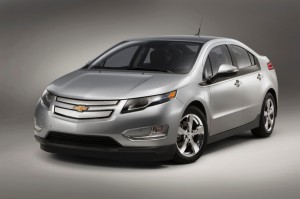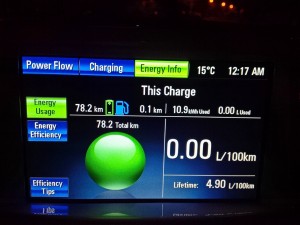 Having been one of the first electrified mass market vehicles to hit the market, originating with the 2012 model year, there has been plenty of coverage for the Chevrolet Volt since it’s launch.
Having been one of the first electrified mass market vehicles to hit the market, originating with the 2012 model year, there has been plenty of coverage for the Chevrolet Volt since it’s launch.
I had the honour of being one of the first wave of auto journalists to get behind the Volt back in 2011. I put it through it’s paces in an earlier Enviro Dad Test Drive which you are free to look back at again by following the link. In the time since, sales have continued to meet or exceed the modest expectations placed upon it, with Canadian sales figures totalling close to 2,700 units in Canada since sales began in 2012.
One of the advantages that the Volt has over it’s other EV competitors is in it’s range-extender capability. With a 1.4 L 4-cylinder motor on board that creates and electric charge when the battery depletes itself, the Volt has the capability to travel upwards of 500 KM’s without needing to be re-charged or re-fuelled. G.M. is always quick to point out that the gas motor doesn’t directly propel the motor, so technically it isn’t a pure plug-in hybrid such as a Toyota Prius PHEV which would run on a combination of electric battery and hybrid propulsion.
While the argument over semantics rages on as to how to define a Volt, the one tangible difference between it and other PHEV’s is in the range it can drive on pure electric drive alone. Many PHEV’s such as the Prius, the Honda Accord PHEV and even the Porsche Panamera S E-Hybrid have EV only ranges in the 20-40 KM range. The Volt by comparison has a stated EV range of between 40-80 KM’s or roughly twice the others.
The ranges can play a big role in determining suitability for a purchaser, so when I had a chance to grab the Volt again for a refersher week, I decided to see just how far I could get on a single charge and without needing to rely on the range-extender motor. Could I hit the top-end projected range of 80 KM’s (50 miles)?
The answer, as you can see through the photo below basically was…yes.
While falling just a shade below 80 KM’s, I was certainly close enough to state that it is indeed possible to hit 80 KM’s in certain situations without needing to rely on the gas-fuelled range-extender and thus drive completely emissions free.
To provide context, I achieved the range seen above over a period of 2-1/2 days and through exclusive city driving only. At no point did I ever drive in a way that would be considered hyper-miling (using extreme driving tactics to achieve maximum fuel efficiency), nor did I plan my routes in such a way to achieve optimal driving conditions (flat, downhill, etc.). What I did employ were some basic fuel-efficient driving techniques such as gradual acceleration, coasting to decelerate, following the posted speed limits and in some cases where appropriate to do so, I down-shifted to low gear which creates a bit of a enhanced re-generative situation that can extend the range of the battery.
I also drove the Volt in mid-June with temperatures averaging around 24 degrees celcius (75 farenheit).
Being a fuel efficient driver involves employing a number of basic, yet often ignored techniques. Whether driving an electrified vehicle or one propelled by an internal combustion engine, through the use of common sense tactics like gradual acceleration, removing your foot off the accelerator in advance of needing to brake, and observing posted speed limits, you can achieve significant gains in driving range or fuel consumption.
Where electrified vehicles are concerned, range anxiety can be solved not just through the development of better battery technologies, but also through the implementation and practising of common sense driving techniques as well.
With fuel prices hitting historic high levels this past weekend, one would think that driving in as fuel efficient a manner as possible would be something everyone would want to do.


Leave a Reply